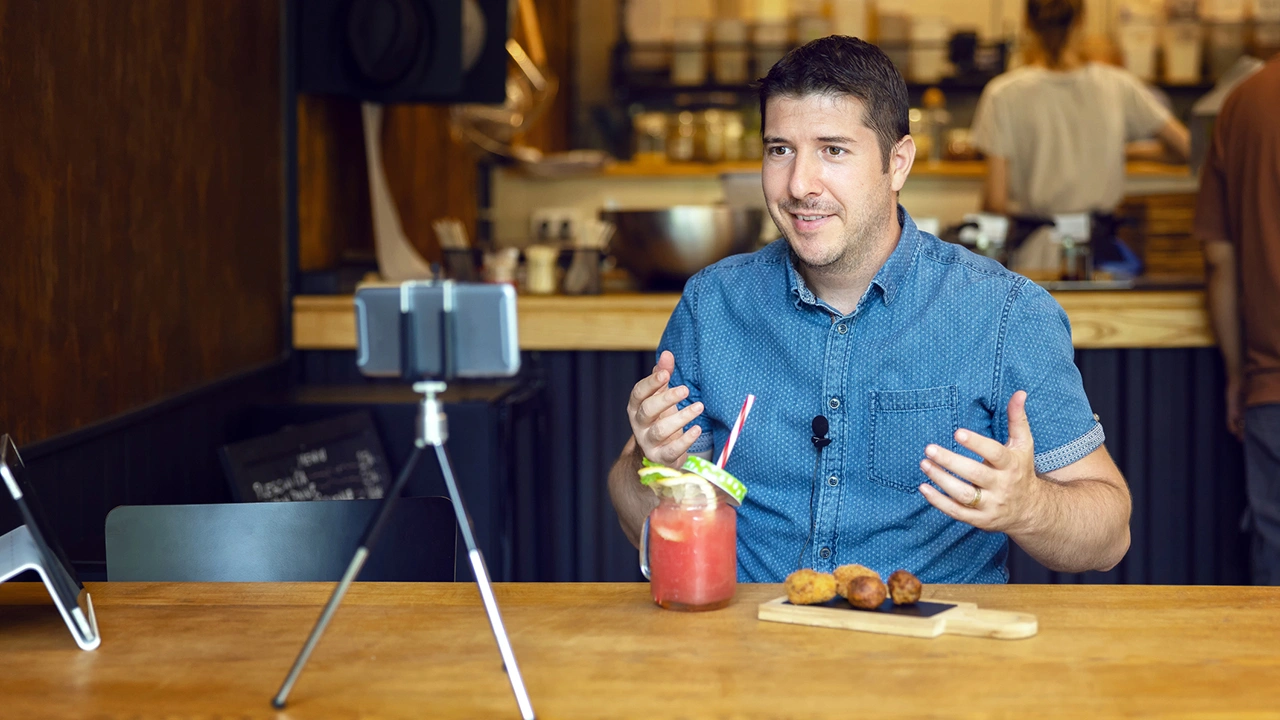
April 7th, 2025
In an era where 90% of diners research a restaurant online before visiting a restaurant, food and beverage creators have generated over 75 billion impressions and influencer marketing has become indispensable for restaurants seeking to stand out in a crowded market. But success hinges on strategy, authenticity and ongoing engagement – not one‑off posts.
In today’s digital ecosystem, not all voices serve the same purpose: some excel at sparking immediate sales, while others build lasting educational value. Understanding the distinction between “influencers” (who drive transactions) and “content creators” (who inform and engage) is the first step toward crafting campaigns that both convert and cultivate loyalty.
Influencers are your brand’s megaphone – use them when you want to sell (new menu items, promotions).
Content creators excel at educating (behind‑the‑scenes tours, cooking tips) and building evergreen value for your channels.
Key takeaway: Match the individual’s skill set to your campaign goal – awareness, education or conversion.
A scattershot approach to partnerships wastes budget and erodes brand credibility. Instead, successful restaurants align on brand fit, prioritize authentic long‑term collaborations, and harness the outsized engagement of nano‑ and micro‑influencers – who often deliver engagement rates as high as 7 percent, compared to mega‑influencers’ 1–3 percent.
Align on Brand Fit: Does their aesthetic, tone and audience match your concept? A mismatched partnership can confuse diners.
Build Long‑Term Relationships: One‑off Pride‑Month or Grand‑Opening pushes have fleeting impact. Instead, nurture ongoing collaborations—invite creators for quarterly tastings or seasonal menu previews.
Leverage Nano & Micro‑Influencers: Though they have smaller followings (<10K), nano‑influencers boast engagement rates up to 7 percent – over double that of mega‑influencers – and foster tight-knit micro‑communities through active comment replies and DMs
User‑generated content is only the tip of the iceberg. From in‑kitchen recipe demos and virtual tasting events to exclusive chef’s tables, there are myriad creative ways to activate influencer partnerships that extend reach, drive bookings and generate press‑worthy moments.
Recipe Takeovers: Have a creator demo a signature dish in your kitchen, then repurpose the footage for Reels and Stories.
Virtual Tastings: Send curated tasting boxes to influencers’ homes, then co‑host a live tasting session.
Exclusive Events: Host “Influencer Only” chef’s tables, granting VIP access that fuels FOMO and organic buzz.
The most effective outreach feels personal, not transactional. By demonstrating you’ve studied a creator’s work, clearly defining deliverables and timelines, and offering VIP experiences, you set the stage for seamless collaboration – and content that feels authentic rather than forced.
Personalize Your Pitch: Demonstrate you’ve studied their content—reference a recent post and explain why your brand resonates.
Spell Out Expectations: Clarify timing, messaging, deliverables, compensation and content ownership up front. Transparent briefs reduce friction and ensure alignment.
Offer VIP Experiences: Treat creators like guests of honor—behind‑the‑scenes tours, chef meet‑and‑greets or custom swag. Positive experiences translate into authentic enthusiasm.
Publishing an influencer post is just the beginning. To maximize reach and build community, restaurants must actively engage – liking, saving, replying to comments and resharing to Stories – while also re‑igniting dormant followers through DMs and interactive polls. These signals tell the algorithm to boost your content, driving new eyes to your dining room.
Activate Your Audience: When an influencer’s post goes live, engage immediately—like, save, reply to comments and share to your Story. Algorithmic signals boost reach.
Re‑Engage Dormant Followers: Use DMs or Stories polls to reconnect with followers who haven’t interacted recently, fostering a sense of community.
Maintain Two‑Way Conversation: Respond to every comment on both your channel and the influencer’s post to keep momentum.
True ROI goes beyond vanity metrics. By setting clear KPIs (e.g., promo‑code redemptions, UTM‑tagged link clicks, Google Reviews growth) and A/B testing different influencer tiers and formats, restaurants can pinpoint which tactics yield the best return and continuously refine their approach.
Track Micro‑Metrics: Beyond vanity metrics, monitor saves, shares, DMs generated and traffic spikes in your Google Reviews or website bookings.
Set Clear KPIs: For awareness, use view‑through rates and reach; for sales, track promo‑code redemptions or UTM‑tagged link clicks.
A/B Test Approaches: Compare nano vs. micro vs. macro‑influencer campaigns to identify which delivers the best ROI for your concept.
Brie Burger Reel: A regional burger joint partnered with a local nano‑influencer who posted a 30‑second reel of their new brie‑topped burger. The video earned a 15 percent engagement rate, drove a 12 percent uptick in weekend reservations, and generated 50 new Google Reviews in two weeks.
Influencer marketing for restaurants isn’t a “set‑and‑forget” tactic. By distinguishing between influencers and creators, forging authentic, ongoing partnerships (especially with nano‑influencers), diversifying activations and rigorously engaging and measuring, restaurants can turn social buzz into real‑world foot traffic and revenue.
Beyond likes and comments, effective ROI metrics include:
Promo‑code redemptions or UTM‑tagged link clicks for direct sales attribution.
Google Reviews growth and website booking spikes to gauge new traffic and brand trust.
Engagement signals (saves, shares, DMs generated) to understand content resonance. Setting clear KPIs before launch and A/B testing nano vs. micro vs. macro‑influencer campaigns helps pinpoint which partnerships drive the best returns.
Nano‑influencers (1K–10K followers) and micro‑influencers (10K–50K) often achieve engagement rates up to 7 percent – more than double that of larger accounts – and cultivate tight‑knit communities where comments and DMs spark real conversations. Their authentic connections and higher responsiveness translate into stronger brand advocacy, making them a cost‑effective way for restaurants to boost both awareness and reservations.